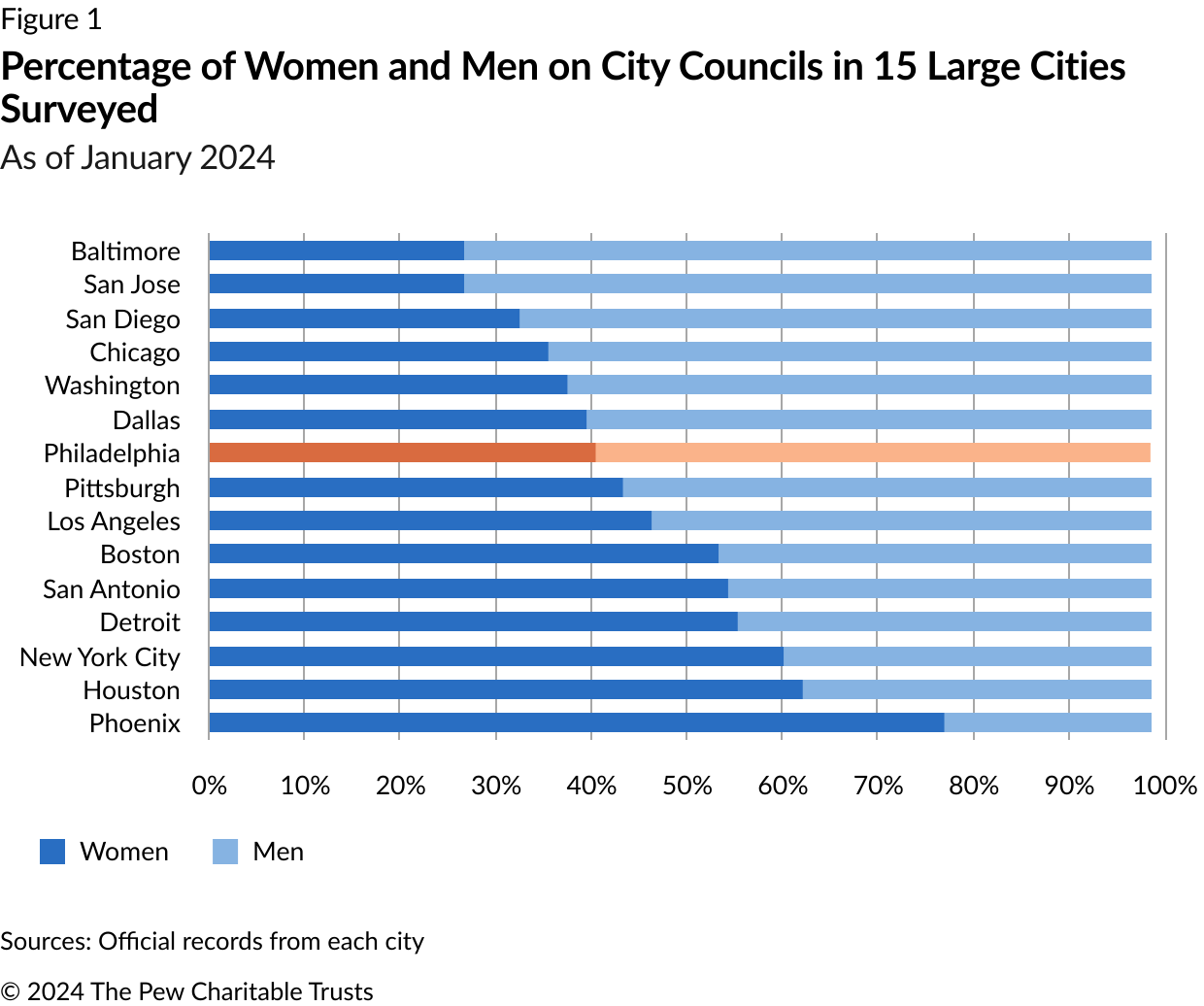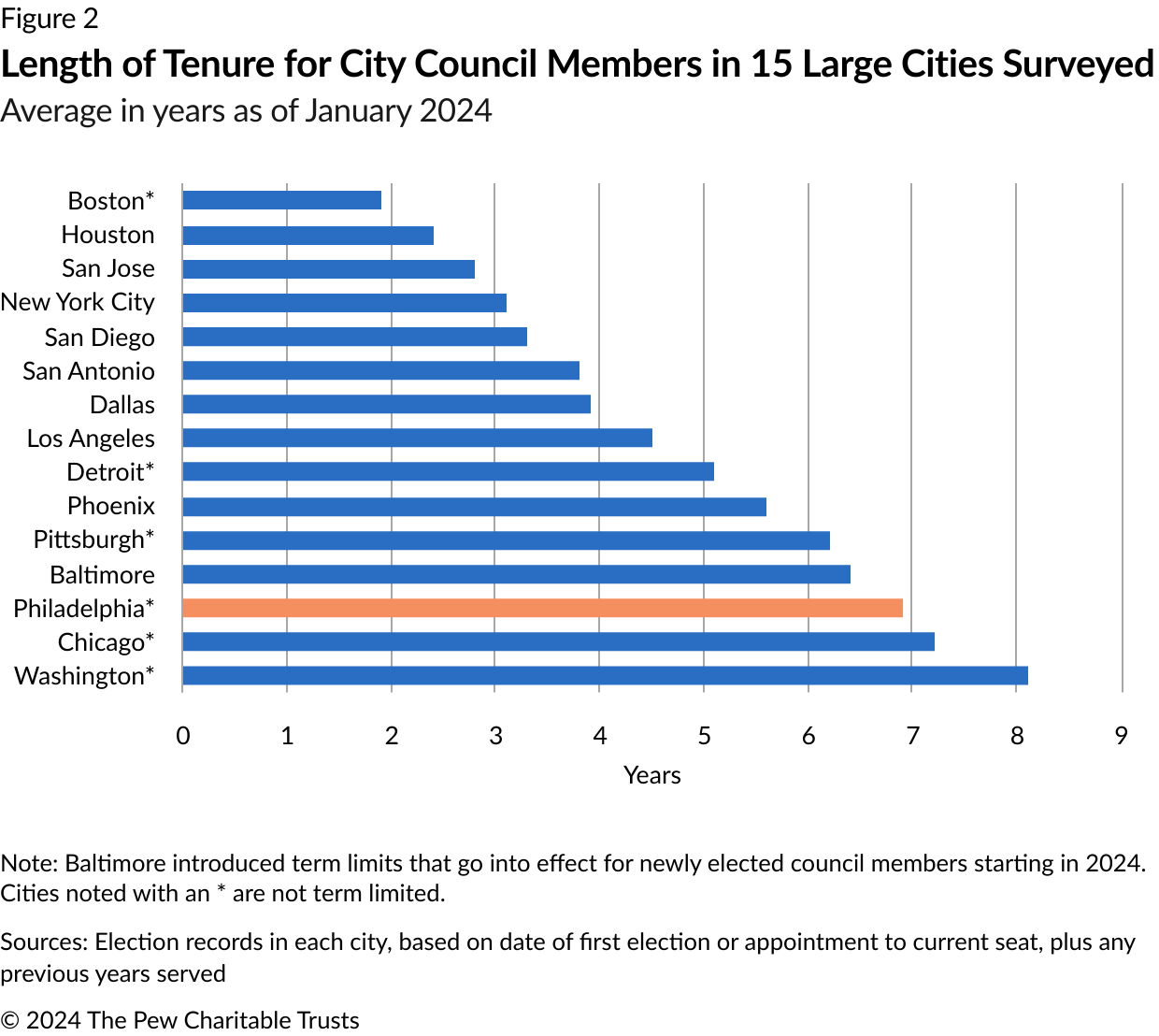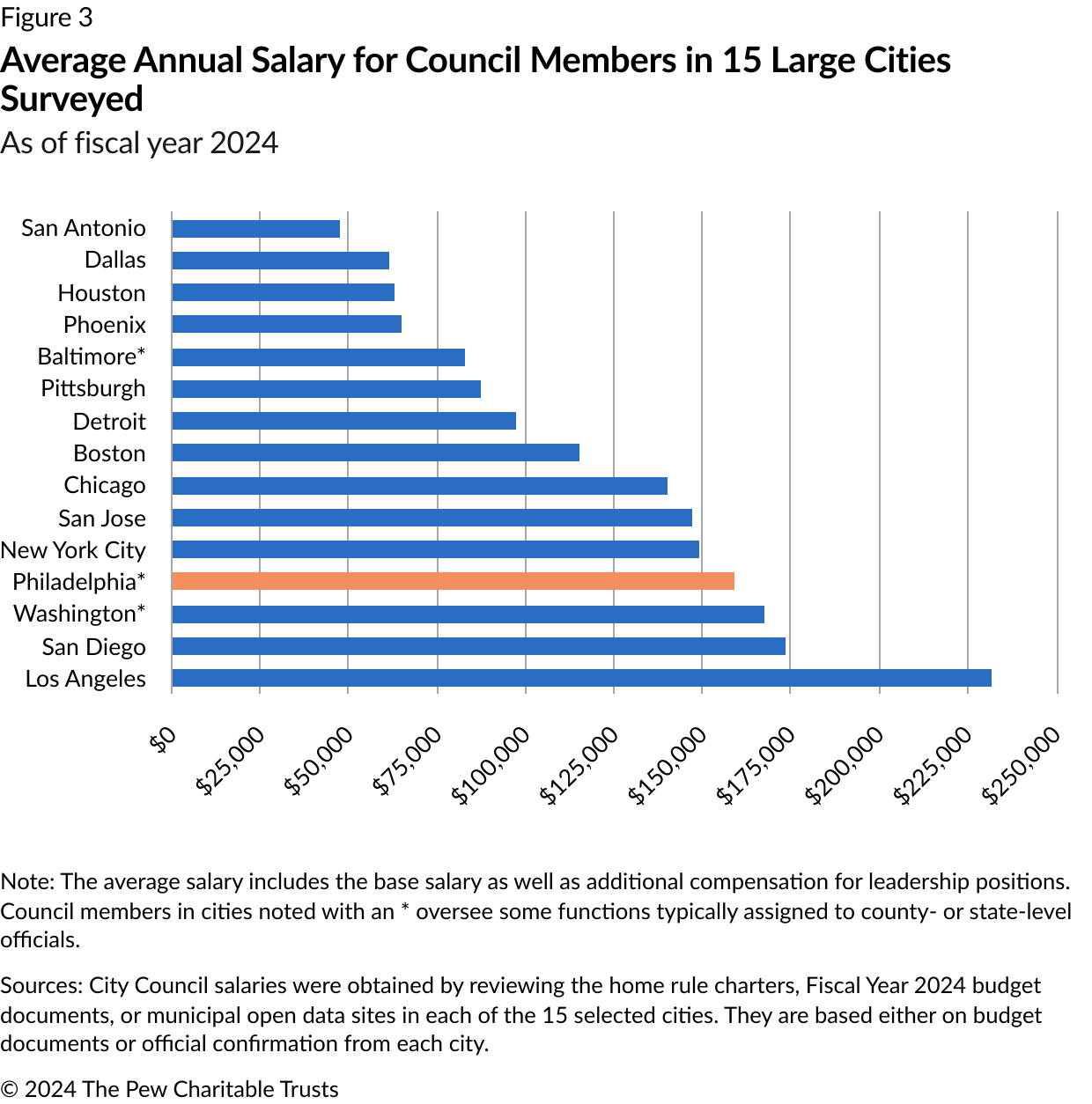More Women Serving on City Councils Across the Country
Among large cities surveyed, tenure among council members decreased by a year since 2016, while salaries increased by 27%

The makeup of city councils nationwide tends to change every four years because of resignations, the election of new members, and term limits, among other reasons. A review of 15 large city councils by The Pew Charitable Trusts highlights some major changes in 2024, particularly in the share of seats held by women.
The analysis provides a snapshot of the city councils in Baltimore; Boston; Chicago; Dallas; Detroit; Houston; Los Angeles; New York City; Philadelphia; Phoenix; Pittsburgh; San Antonio; San Diego; San Jose, California; and Washington, D.C. Although these cities may not all be on the same election cycle, they provide a view of city councils in large cities throughout the country.
One of the most significant changes since 2016, when Pew last conducted a similar analysis, is the increased share of women serving on city councils. All but two of the comparison cities—San Diego and Washington—boosted the number of women on their legislative bodies during this period. And as of 2024, six cities have majority female representation; none did in 2016. Phoenix has the highest percentage of female representation at 78%, while Baltimore has the lowest at 27%. There were no publicly identified nonbinary members serving on these councils. Among the 15 city councils examined, the overall share of female representation on the local legislatures increased from 31% in 2016 to 47% in 2024. (See Figure 1.)
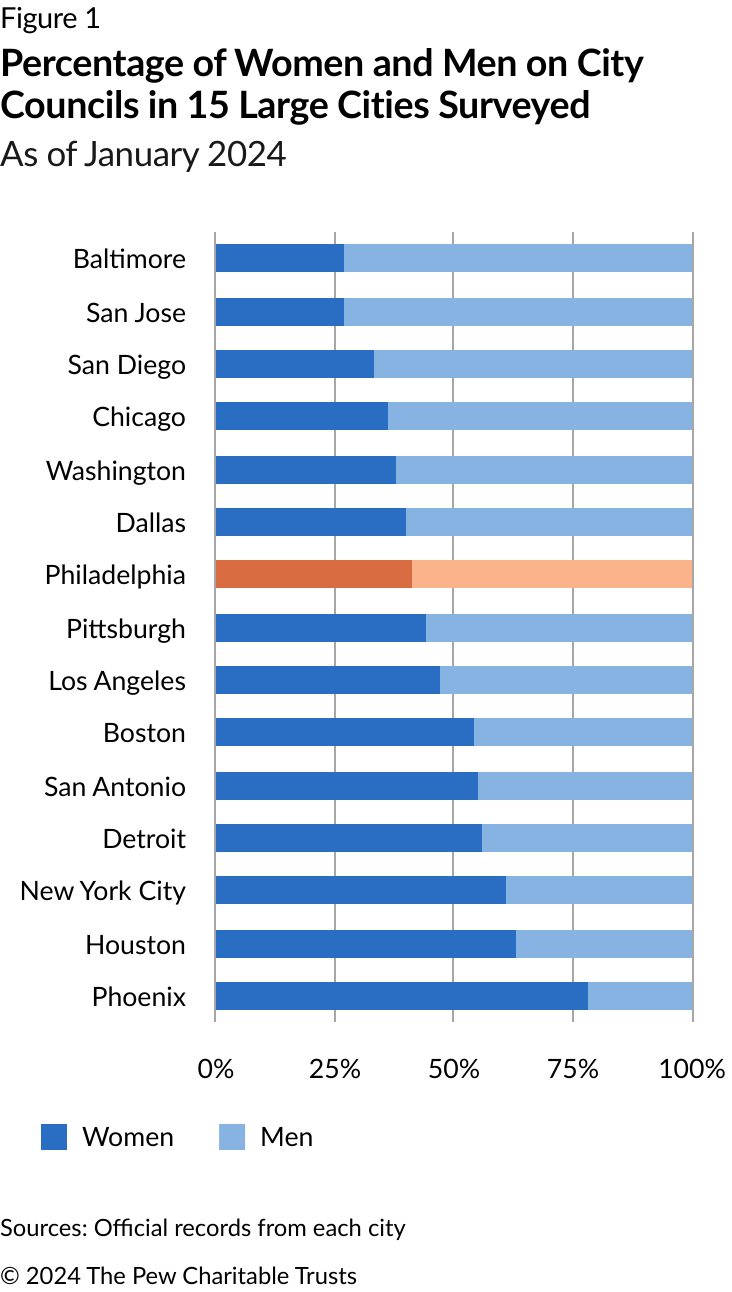
A look at average tenures
Among all of the cities examined, the average tenure is 4.7 years, down from 6.2 years in 2016. (See Figure 2.) The average tenure length in each city is heavily influenced by a few members with very long tenures, including Philadelphia Councilman Brian O’Neill, who has served more than 40 years, and D.C., Council Chair Phil Mendelson, who has served for 26 years. Philadelphia’s city council experienced significant turnover in 2024; average tenure there has declined from 15.5 years in 2011 (the longest among the comparison cities) to 6.9 in 2024. More than half of current council members have now served less than a full term.
Overall, council members have longer tenures in cities with no term limits, and not surprisingly, that’s the case in all of the five cities with the longest average tenures. However, Boston, which has term limits, also has experienced extraordinary turnover in recent years. The council there had the lowest average tenure among the comparison cities at 1.9 years, down from 7.7 years in 2011. Pew’s next analysis could show more tenure changes: In 2022, Baltimore voters approved a charter change that introduced term limits for city council members. The rule goes into effect for new members elected in 2024.
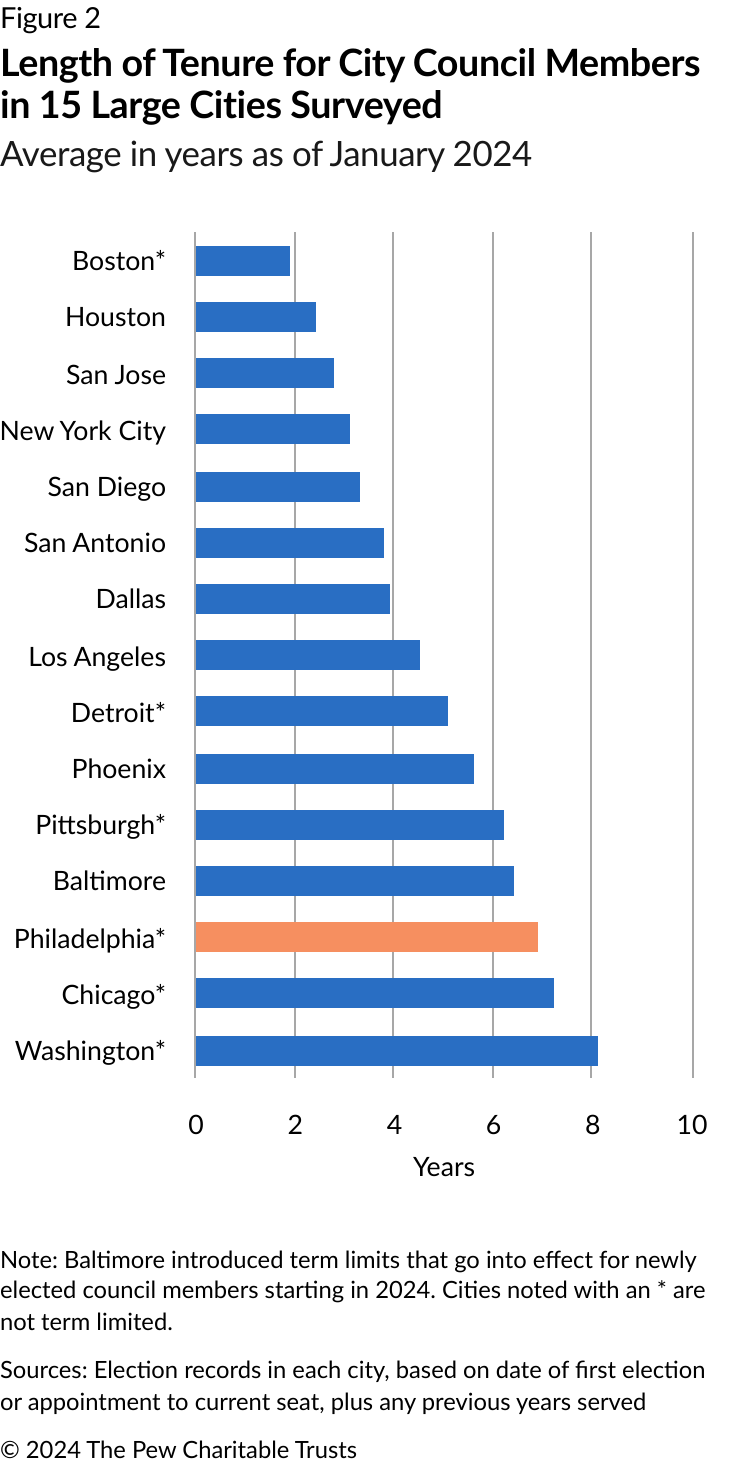
Comparing council member salaries
Pew also examined the average compensation of city council members, including base salary and extra pay for leadership or committee assignments. Overall, average council salaries have increased by 27% since 2016. Los Angeles has the highest average council member salary at $231,802 and San Antonio the lowest at $47,177. However, this may not capture total annual compensation from all sources because some cities, including Philadelphia, permit outside employment for their council members. (See Figure 3.)
Among the cities surveyed, San Diego and San Jose had the largest increases in the eight years since the previous analysis. San Diego’s average salary increased 130%, from $75,400 in 2016 to $174,400 this year, while San Jose’s average salary increased 74%, from $84,400 to $147,000. The cities with the lowest average salaries (San Antonio, Dallas, Houston, and Phoenix) have had no or only marginal increases since 2016.
Some cities, such as San Antonio, require a charter change and voter approval to increase the salaries of election officials. In others, such as Philadelphia, council members receive cost of living increases like any other exempt city employee.
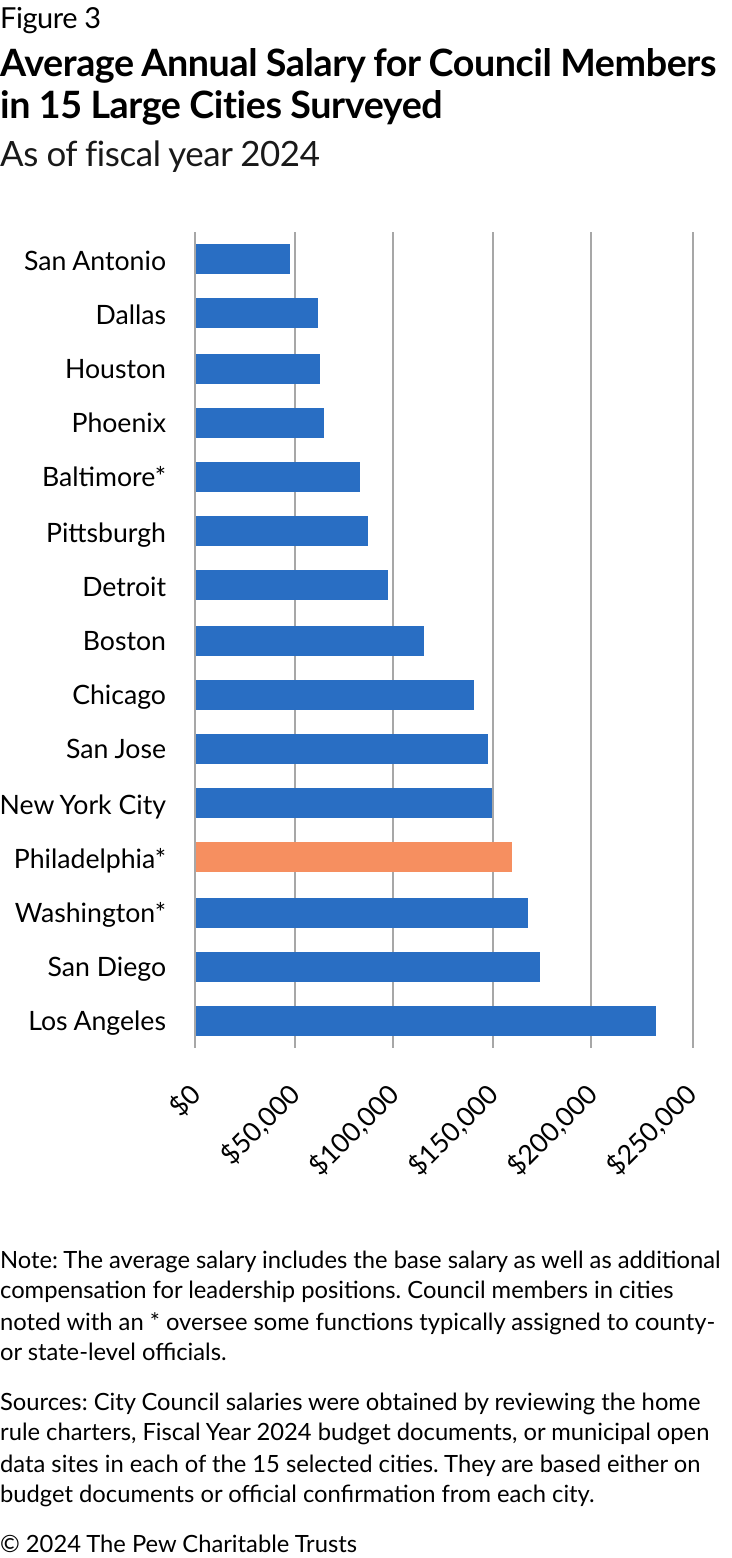
In conclusion, the 15 cities have nearly equal representation by male and female legislators for the first time in Pew’s recurring review of select city legislatures, albeit with significant variations among the cities. In addition, salaries increased by an average of 27% since 2016 while average tenure decreased by a full year. The changes recorded this year highlight a period of turnover and new leadership across many large U.S. cities.
Katie Martin is a director and Alix Sullivan is an officer with The Pew Charitable Trusts’ Philadelphia research and policy initiative.
